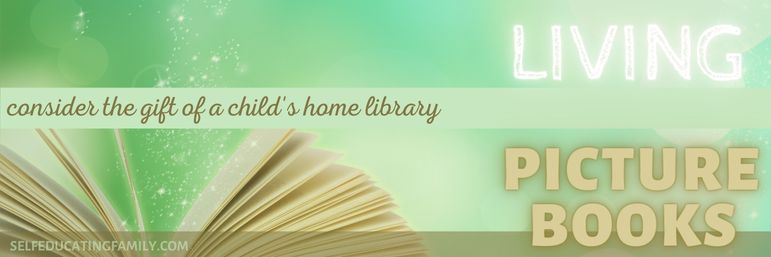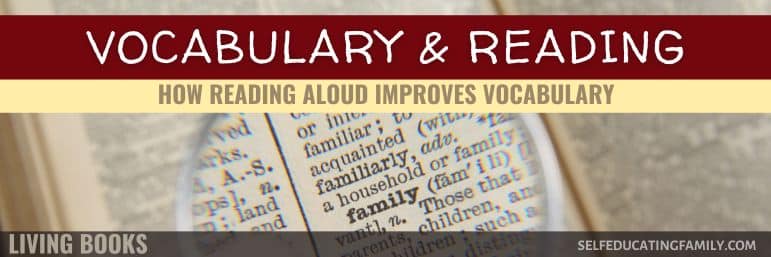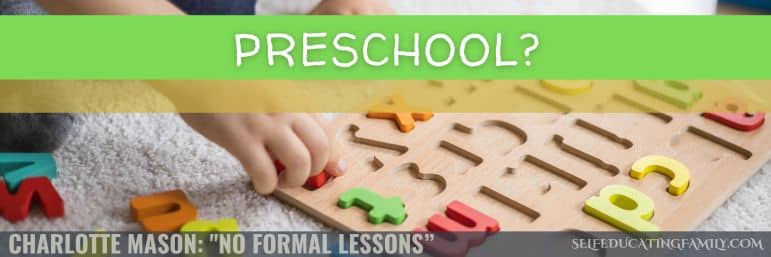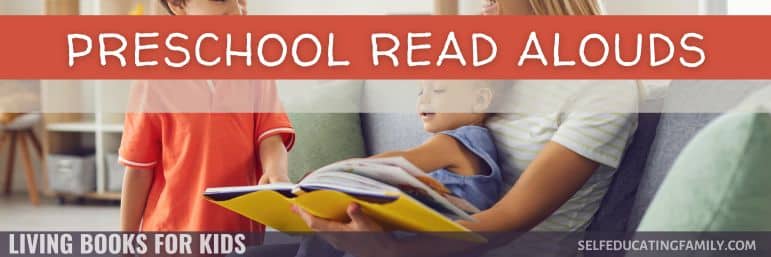The Gift of Living Picture Books
When our family started, we were fortunate enough to receive a gift of the beginnings of a home library of living picture books. What a blessing!
My sons were able to grow up with an abundance of books.
This post may contain affiliate links. If you find my content valuable and make a purchase through one of my links, I will earn a commission at no cost to you, which helps me keep this blog going so I can help you even more! I recommend products I trust and/or use myself, and all opinions I express are my own. Read the full disclaimer here.
Impact of books in the home
“Whether rich or poor, residents of the United States or China, illiterate or college graduates, parents who have books in the home increase the level of education their children will attain, according to a 20-year study.” University of Nevada, Reno.
“Books in home as important as parents’ education in determining children’s education level.” ScienceDaily. ScienceDaily, 21 May 2010.
This study from 2010 showed that a 500-book library in a home could be as influential as the parent’s educational level on the outcome of the child’s educational level. Even 20 books can make a significant difference.
Another study estimated the number of books that are needed to improve literacy is only 80 books. Below that number correlated to below-average literacy rates, but rates continued to increase up to about 380 books in the home, then they level out. (Mental Floss)
Why a home library for children?
The conclusion is clear—books are good for you. Having a home with books promotes literacy. So a home library for kids is a great idea.
Give the gift of books to a young person in your life.
And please, select living books.
What are living picture books?
According to Ambleside Online, living books are both well-told and contain great ideas.
Living Picture books are picture books – books for younger children with pictures vital to the presentation – but they still are living books because they engage the child with ideas.
I highly recommend perusing the children’s section of your local public library before purchasing any books for your kids, grandkids, or any kid in general.
If you’ve ever gone to the library children’s section, you will find the section with picture books. There is a wide range of quality found in children’s picture books. Here’s my scale: on the low end – twaddle. On the high end – living books. You can find both at your local library.
But how can you distinguish between twaddle and a worthy book?
My personal test for living picture books
Here’s how I can tell if it qualifies as a living picture book.
- Read the book.
- Read it aloud.
- Read it aloud to a child.
- Read it aloud to a child 75 or 80 times.
If you still like it, then it’s probably a living picture book.
Why I think this is a good test
This test works because the best children’s books stand up to multiple readings.
Some books don’t. You get tired of them really fast. The problem comes when a child’s request to read a specific book makes you groan inside. Ideally, find the living picture books and steer the kids away from the twaddle before it becomes a favorite for them.
Why should you read aloud to your child?
Living picture books can ignite a love of learning in a young child.
According to Jim Trelease, author of the Read-Aloud Handbook, reading aloud to your child helps in the following “well-documented” ways:
- Reading develops vocabulary.
- It models reading fluency and can demonstrate expressive reading.
- Reading gets associated with pleasure.
Other sources have documented specific childhood learning such as helping children develop phonemic awareness through rhymes, etc.
Reading aloud is essential for kids. Read the Read-Aloud Handbook if you are not convinced.
Picture Books Specifically help
Interestingly, Trelease makes a point regarding exactly how picture books read to young children help improve vocabulary you might not have considered.
According to Trelease, the “common lexicon” of English has maybe 10,000 words. And the rest of the thousands and thousands of words are considered “rare”. “The eventual strength of our vocabulary is determined not by the ten thousand common words but by how many rare words we understand.”
Here’s the connection between picture books and rare words: In our ordinary language – the stuff you commonly say to your kids – we don’t actually use those rare words so much. But picture books do. Each little picture book may not use more than a few, but they are thematically focused.
Think about it. Take a book like The Little Engine That Could by Watty Piper. (The real version with all the words, not the abridged board book.) With a quick skim, I found these words that I wouldn’t use all that much in everyday language:
- Jolly, rumbled, bobbed heads, jack-knives, merrily, roundhouse, switches, station yard, locomotive, grade (meaning incline).
So you can see how a picture book, because it tells a particular story, will have language focused on that theme. And it usually contains vocabulary-specific words, including some rare words.
The more stories you read aloud to a child, the more words and rare words they hear.
“The least expensive thing we can give a child outside of a hug turns out to be the most valuable: words.”
—Jim Trelease
Another Tip
An important note from Deborah Taylor-Hough, author of A Twaddle-Free Education, lists books by age/grade level but cautions against underestimating the ability of your kids to hear material above their “grade”. It’s one of the most fantastic things about reading to your kids – they get to listen to stories that are above their reading level.
This is a perfect thing to remember if you can find any “long” picture books – which are picture books with lots of words on each page.
The gift of a living book library
We acquired our young library when our children were babies. Their very generous aunt decided to start a personal “book of the month” club where she would send a dozen books every few months to the boys. So many stories became favorites!
Then we started adding to our favorites through used book sales – whenever I saw a title that was a beloved library read, I’d pick it up.
Culling
We love our aunt, but not all of the books she sent became our favorites! And that’s ok because we look fondly at some of these books and then think fondly of the loving aunt who gave us this gift. And as we got selective, we would re-gift the books to someone else. Or drop them off in our local Little Free Library. Just because it is a good quality living book, it might not be the right book for your family.
Examples of living picture books from our home library
To give you an idea of what I mean by living picture books, here are some of the books that we read over and over again. Family favorites.
Living Picture Books
Longer picture books
Are you ready to start a home library?
Newly married, baby shower, first grandkids, or just your own kids… these are all great opportunities for book-giving. So are charitable organizations that specialize in books for kids.
Remember: If you can, test drive the book first. Just imagine yourself reading it over 100, 200, or 300 times, which you may have to do.
What to do if you don’t like a story and you are in the middle of reading it out loud?
What if you don’t like the book you were testing out at the library? Well, if you still have pre-readers, just make up a story about the pictures. I got away with this for years because my kids were slow to independent reading.
Next for us
My boys are going to divide up their books when they start to have kids. Or maybe they’ll just leave them with Granny! Either way, I’ll be sure to get lots of books to read to the next generation.
Keep Learning
Related Articles:
- Living Books We Read in High School
- 5 Free Kindle Classic Living Books
- Reading Aloud
- Thanksgiving Living Books
More
- Jim Trelease’s Read-Aloud Handbook
- Jim’s Trelease Website with book recommendations
- Charlotte Mason Living Books Library
- What are Living Books and How do I use them?
- Books in home as important as parents’ education in determining children’s education level
- Deborah Taylor-Hough who wrote Twaddle-Free Education blogs at Charlotte Mason Home
- Living Literature Booklists
- How to Choose Excellent Living Picture Books
- Favorite Read-Alouds for pre-schoolers by Simply Charlotte Mason
- No Twaddle List for each Grade by the Unlikely Homeschool
- Living Books for pre-schoolers
- Inspiring living books
- What are living Books?
- Best Picture books
- Reading aloud to big kids
- Book Charities that are changing the world
- Kids need to Read charity
- Little free library
- Charity for Military families reading books to their kids during separations








